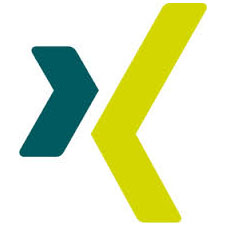Interview with Dr. Günter Hilken
Member of the Supervisory Board of CURRENTA, former Chairman of the CURRENTA Executive Board (2011 - 2020)
“With FOKUS and FOKUS+, we have completely redefined the concept of strategy.”
CURRENTA, which originated as a spin-off of Bayer AG, decided to take the next step after a successful restructuring and optimization phase – that of sustainable corporate development.
Accompanied by S&P Consulting, CURRENTA’s management initiated a strategy process that for the first time led to an overall corporate strategy and dissolved the business unit-oriented logic that had prevailed until then. The new strategy refocused attention on the essentials: core business processes, customer relationships, and CHEMPARK. This was accompanied by a realignment of the business model and a fundamental change in the organizational design and management logic of the company.
The strategy review, four years after the start of the joint project, was designed as a learning process. This ensured that CURRENTA’s Corporate Development department would in the future be able to independently support the overall corporate strategy work in the function of an in-house consultancy.
The following interview was conducted in November 2020 and is part of the brochure “FOKUS | A Collaborative Leadership Performance”. In the interview, the former Chairman of the Management Board and current Supervisory Board member Dr. Günter Hilken talks about the strategy processes, the cooperation with S&P Consulting, and his personal learnings from the past years.
Dear Dr. Hilken, you have been Managing Director of CURRENTA since 2011. In your view, what are the most important goals you have achieved with CURRENTA over the past ten years?
Probably the most important goal for me was to lead CURRENTA out of its restructuring mode and give the company a sustainable direction and perspective with a focus on the issues of customers, CHEMPARK, and efficiency.
A lot has happened in recent years, but this milestone has made CURRENTA what it is today and laid the foundation for a business model focused on innovation and growth under the leadership of new ownership.
With FOKUS and FOKUS+, we have completely redefined the concept of strategy at CURRENTA. Whereas previously strategy was primarily understood within the business units in terms of financial data, CURRENTA is now concerned with the sustainable development of the company as a whole, taking into account market developments – and always with a view to the future, rather than being stuck in the operational here and now.
This change in perspective from the EBIT-driven focus of the business units on their own performance to an overall entrepreneurial view of the customer has not only strengthened the identity of our company and the sense of belonging of our employees. Moreover, we have also succeeded in bringing CURRENTA to an exceptional and stable financial level. When the shareholders at the time, Bayer and Lanxess, announced their intention to sell, this success story did not go unnoticed by potential investors – a long list of interested parties was found.
In addition, CHEMPARK has enabled CURRENTA to position itself as a sought-after, credible, and valued partner in the market as well as in the neighborhood and among politicians. The same applies to energy policy, in the context of which we have earned the status of a recognized and high-profile partner and expert.
What role did external consulting play in this development process?
At the time, we deliberately opted for a consultancy that provided a basic systemic approach with business and strategy expertise, rather than a classic expert consultancy.
A key service in the first step was the development of a process architecture tailored to CURRENTA in the form of an overall corporate strategy process. This process architecture was designed in such a way that the management team was closely involved in the concept development and, as a result, jointly developed the future vision. In this way, a shared sense of responsibility for the results was strengthened.
The combination of internal organizational expertise and external input enabled us to illuminate our blind spots – creating promising solution options that we might not otherwise have considered.
„The way the process and the respective setups were designed not only enabled an empowerment of our business development, but also facilitated a form of collaboration and cooperation that was new to us – on several levels.“
In addition, the external consultancy was instrumental in the development of our new business model. The way the process and the respective setups were designed not only enabled an empowerment of our business development, but also a form of collaboration and cooperation that was new to us – on several levels. A key success factor here was that professional facilitation and clever process design succeeded in integrating the different systems of origin, logic, and stakeholder interests and transforming them into joint solutions that met the highest common denominator of all participants.
Another key factor was that throughout the process, from strategy development to implementation of the reorganization, there was a close cooperation between our corporate development department and the external consultancy. This cooperation and the transfer of know-how enabled our Corporate Development to conduct the strategy review independently and successfully in 2016.
What did you personally learn from the strategy process at CURRENTA?
First and foremost, that you have to critically question your personal basic assumptions on a regular basis. No matter how much you think you know about your business: We all have our blind spots. So we need to provide ourselves with the right impulses to illuminate these blind spots.
Picking up on these impulses, however, is not so easy. Often they simply bounce off, because it is far too convenient not to deal with what contradicts one’s own assumptions. It is, therefore, necessary to introduce these impulses from the outside in a targeted manner and thus irritate one’s own organization. If the irritation is accepted and processed, completely new options can emerge.
„At the beginning of the strategy process, it was far from clear where the journey would take us.
However, we knew what the next steps would be and that the further analyses, observations, and discussions would bring us clarity in terms of content. You have to be able to endure this ambiguity.“
Another learning effect for me was how important it is to be able to endure states of limbo and to exchange certainty of results for the certainty of process. At the beginning of the strategy process, it was far from clear where the journey would take us. However, we knew what the next steps would be and that further analyses, observations, and discussions would bring us clarity in terms of content. You have to be able to endure this ambiguity.
The important thing in such strategy and change processes is that there are always winners. Anyone who feels that his or her personal goals are in line with those of the company and that the realignment will help him or her advance within the company is intrinsically motivated to drive the process forward. Of course, not everyone shouts “hurray,” but in the company’s internal public, such individuals are very valuable because they ensure broad acceptance of the planned changes.
Resisters, on the other hand, who consistently fight against the change efforts, unfortunately simply have to be parted with. True to the motto: “Shoot the resister and carry the wounded” – or to put it another way: In case of doubt, it is better to separate from individual actors who are deliberately working against the change than from the change target. Here, it is usually also worth investing time to understand the interrelationships and personal relationships between those involved.
A guiding coalition, a dedicated network of supporters, is worth a great deal, especially in times of change and upheaval.
After almost ten years as Managing Director of CURRENTA, you will be moving to the Supervisory Board on January 1, 2021. What would you like to pass on to a younger generation of managers?
With regard to change processes of this magnitude, I would, first of all, advise them that it is worthwhile to consistently stick to the process of foresighted self-renewal: It is important not to lose sight of it, to constantly monitor and evaluate opportunities and risks, and to identify and correct relapses into old patterns as quickly as possible.
Another success factor has proved to be informing employees, shareholders, and employee representatives about the strategy process and the results as promptly as possible and in a way that is specific to the target group, i.e., in a way that they can understand. The stakeholders must understand the change and be picked up. We have to accept that strategy and change processes do not only take place on the rational level. There are very demanding human and interpersonal processes, which show their effects mostly in secret. Not taking these into account can lead to the failure of the entire process. For this reason, based on my personal development, I would focus even more on the learning and development perspective in the future.
I would also like to sensitize the next generation of managers to the fact that turnarounds and restructurings have their time when they make sense and are necessary. However, they cannot become a permanent state of affairs, as this would wear down the organization. At some point, a long-term perspective is needed. Cutting costs is often a challenge in itself, but getting a company out of this turnaround and restructuring mode requires far more energy and management expertise – which pays off in the long run.
Brochure on the Strategy Process

Read more in the brochure “FOKUS | A Collaborative Leadership Achievement” about how the CURRENTA strategy process was designed and how FOKUS and FOKUS+ enabled CURRENTA to lead the company out of restructuring mode and into sustainable corporate development.
Request the brochure on the change process here:
CURRENTA
CURRENTA manages and operates one of the largest chemical sites in Europe with locations in Leverkusen, Dormagen, and Krefeld-Uerdingen – CHEMPARK. With a total area of around 11km², some 1,800 buildings, and around 70 resident companies, CHEMPARK accounts for around 10 percent of Germany’s entire industrial sector.
The extensive portfolio of the industrial services company includes site services, supply and waste management services, and other services. CURRENTA thus enables its customers to concentrate optimally on their research and production activities.
Further Information
Learn more about our concepts for developing agile and foresighted organizations on the service descriptions linked below or contact us directly to request more information.
an Online Dialog
 Frédéric SedlákSenior Consultant | HR Management
Frédéric SedlákSenior Consultant | HR ManagementWe are always at your service+49 4102 69 93 22
Ask for free informationf.sedlak@spconsulting.de









